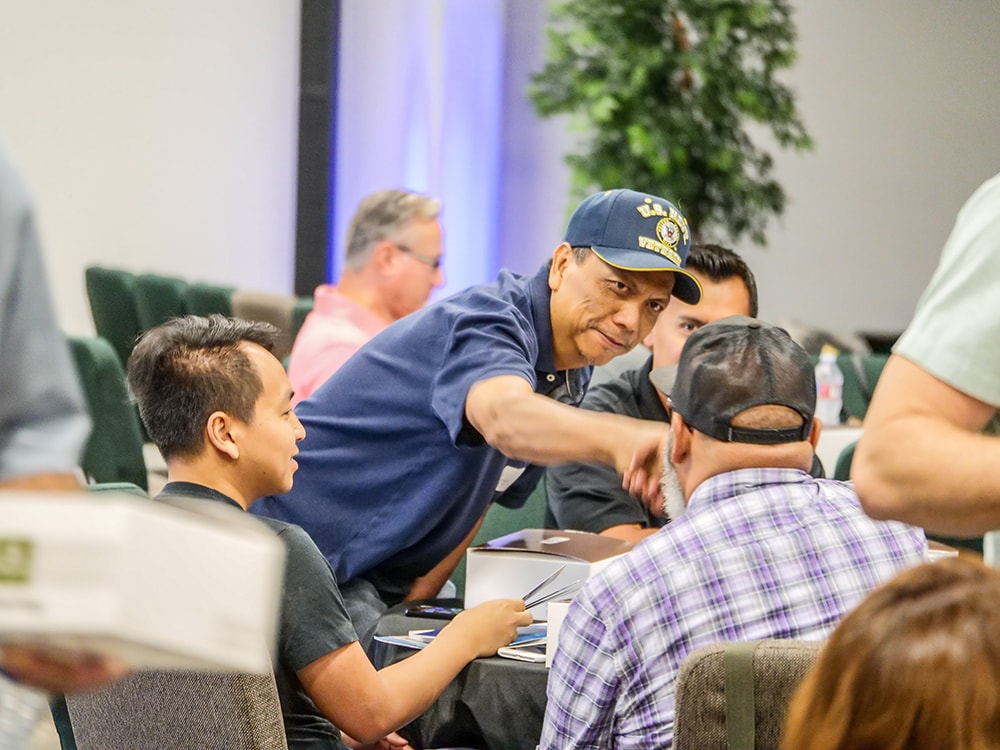The Four ‘C’s of Church Planting Collaboration
Posted 11/29/2017 in Church Planting

Collaboration is a buzzword. Cooperation is all the rage, especially among millennials. It can be fun and it is necessary to get certain things done, especially in church planting. Rarely is this exciting and complex method considered as a process or on a scale. Here are what I’ve developed as the Four “C”s of Connection in Church Planting, and they also apply in every collaborative effort. I’ve certainly adapted and adopted these ideas from many others along the way; the fact that I can’t correctly attribute them is one of the issues with collaboration.
Each “C” is a step on a scale toward complexity, with corresponding potential greater risk and reward. Communication and coordination must increase for progression.
- COMPETE – Are we working toward the same end? Does blowing out your candle cause mine to burn brighter? Is it a zero-sum game where for me to win, you must lose? Some things are rightfully competitive, but kingdom expansion is not a competition. Our friends at New Thing Network talk about the Four “A”s of Movement: Awareness, Agreement, Alignment, and Accountability. New churches are not competition for one another or existing churches; we need to agree on this before we can align any further.
- COMPLEMENT – Every person and organization has a mission, purpose, or objective that drives them. Our missions are like fires we’re entrusted to tend. We can add fuel to another’s fire based on our expertise, abundance, and kingdom-mindedness. Complementing another may not cost much. It doesn’t mean integration. In fact, complementary efforts involve strategic alignment versus redundancy, recognizing the value of others’ work and helping them do what they do best. To complement is to add value without any reciprocation; it is a gift.
- COOPERATE – Thoughtfully and intentionally aligning two or more fires can mean situating them closer together so they are collectively more visible, or spacing them out so they can light a longer path. Strategic proximity requires increased communication and coordination, but it still does not necessitate integration. For example, when Stadia helps churches host Church Planting Residencies, we encourage them to cooperate by bringing residents together for strategic shared learning, but not to collaborate by sharing or swapping residents. Cooperation is alignment in the same direction without intersection, like rails. It doesn’t even always require alignment on distance (where) or speed (when). Cooperation is about the way (how).

- COLLABORATE – The high point of connection involves at least some integration of effort and often resources. This is painfully difficult and often why collaboration breaks down early on. Progressing from the relatively low bar of recognizing we are not in competition to the high bar of integration is facilitated by complementary and cooperative intermediary steps. Collaboration involves continual and mutual reprioritization of the mission. Integration reduces redundancy; it is about stewardship, yet it is often inefficient initially. Time and continual realignment prove collaboration is most effective for long-term initiatives. Ego is the enemy of collaboration.
Trust is the foundation collaboration is built upon. It develops as we endeavor and experiment openhandedly, make adjustments, and graciously move through stages together. This process can only be expedited through shared liminal experiences, but more often it takes time. In either case, it can be painful, but I am convinced collaboration is worth the cost. Nothing is more God-honoring or kingdom-minded than believers working together. Jesus prayed for collaboration in John 17: that we would be unified so that the world would know God’s love. What else is worth collaborating for?
Next Steps and Reflection Questions:
- How can collaboration benefit your calling, and where are you on the scale of the Four “C”s?
- What intentional steps can you take to progress on the scale toward collaboration? With whom? When? Why? How?
- In areas where you are collaborating, how do you and your collaborators need to reprioritize and realign, individually and collectively, for the sake of the overarching mission?

Nathan “Chivo” Hawkins leads Stadia’s overall strategy in the western United States, focusing on partner development for local and global church planting. Previously he played a key role in Stadia’s Global Church Planting strategy with Compassion International and led a church plant relaunch in New Orleans post-hurricane Katrina. As an adoptee and adoptive father, Nathan is passionate about children who come from difficult backgrounds. Originally from Minneapolis, he has also served in churches in Juarez, Mexico, Eastern Tennessee, and his current home, Seattle, Washington. Nathan and his wife Joy have three young children: Benicio, Taegen, and Grace. The Hawkins are a family that welcomes foster children and loves connecting with the local church.

